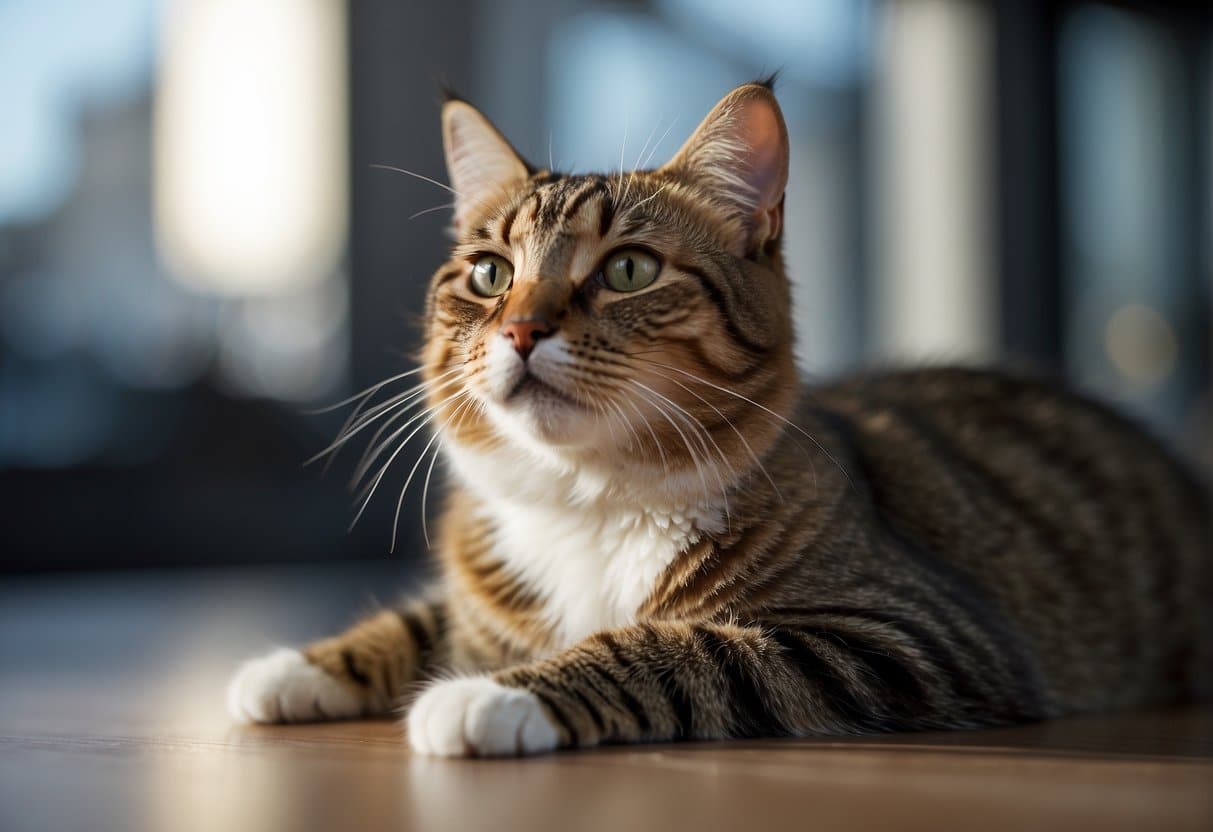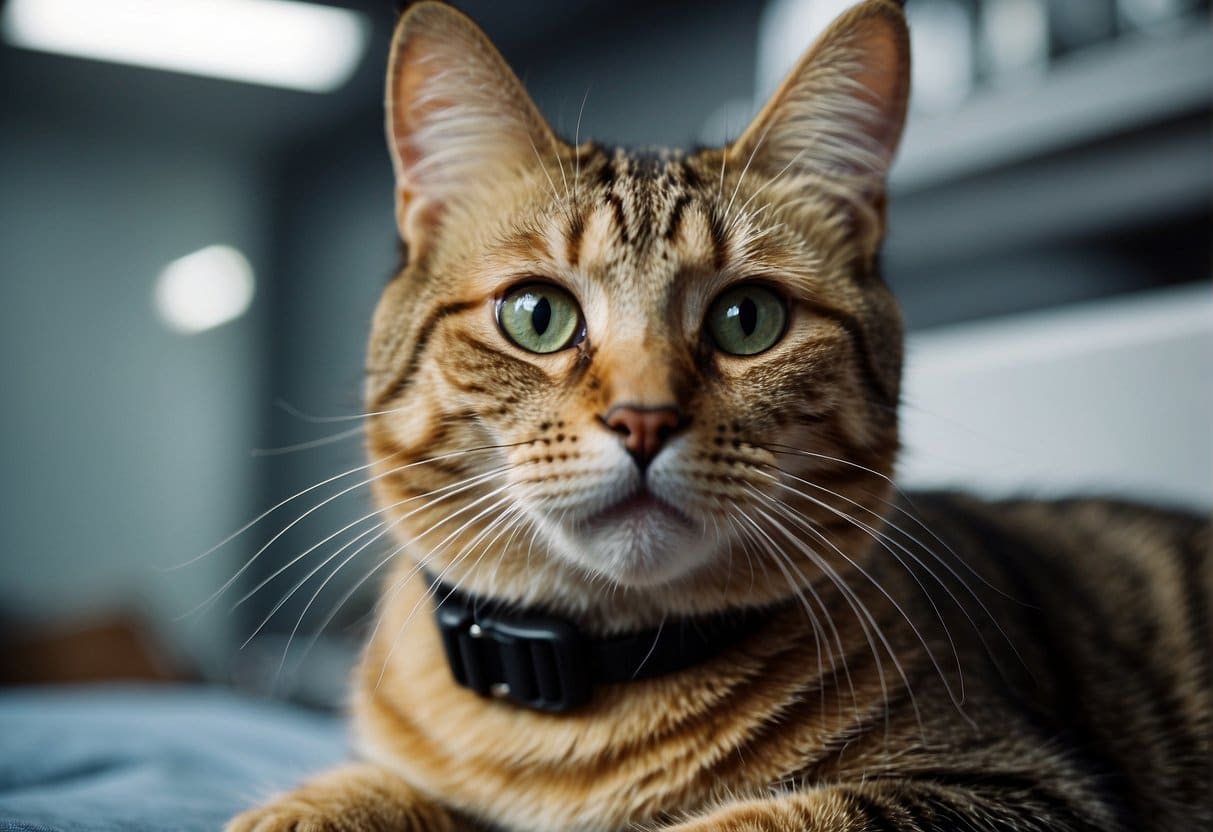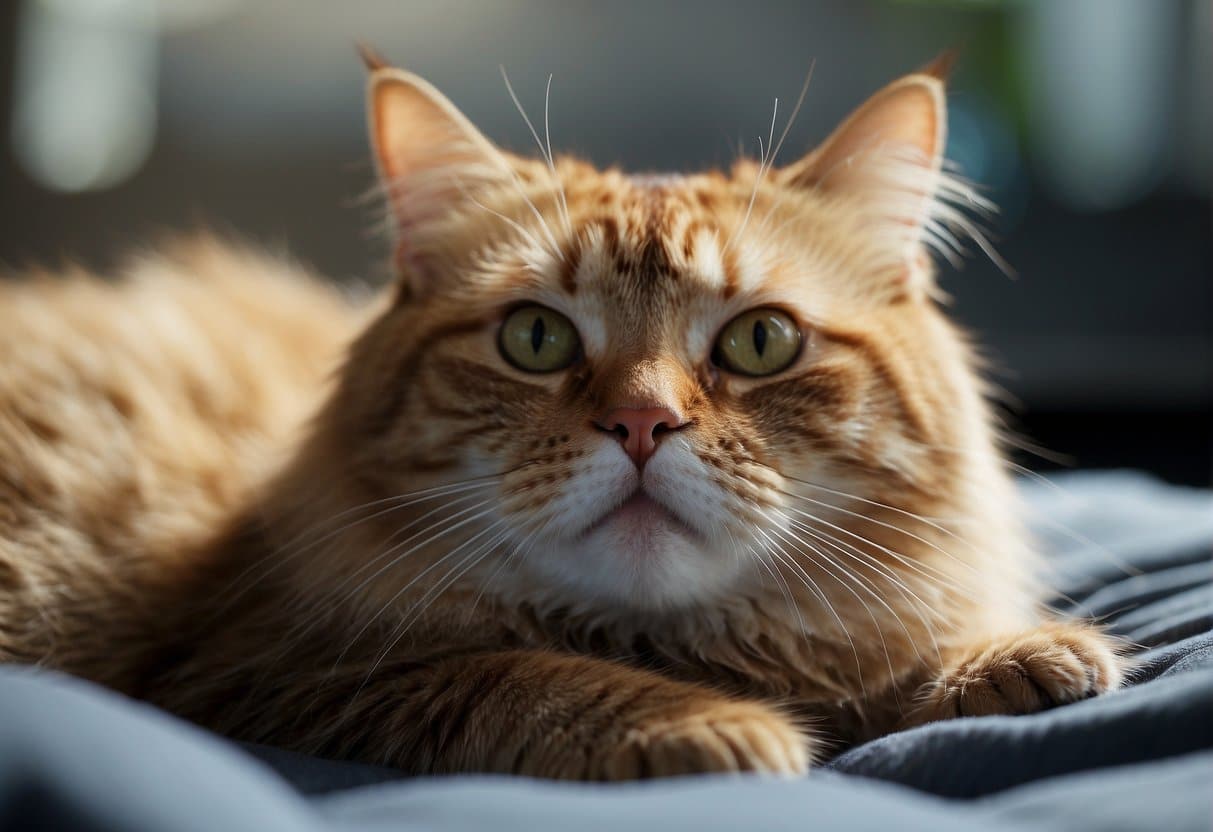
Heavy breathing in cats can be a sign of something as simple as recent play or as serious as medical distress. Understanding the distinction is crucial for the well-being of your feline friend. When you notice your cat exhibiting heavier than normal breathing, it’s important to observe their behavior and the context. If their breathing pattern seems labored without an obvious cause like exercise, it may be an indication of an underlying health issue that requires attention.
Recognizing the difference between normal panting and labored breathing is key to identifying potential health concerns. A heavy-breathing cat could be experiencing anything from temporary stress to severe conditions such as heart disease or asthma. It’s essential to be aware of the various causes and symptoms of respiratory distress so you can act promptly. Being knowledgeable about this aspect of your cat’s health helps you provide the necessary care or seek immediate veterinary attention when it’s needed.
Key Takeaways
- Heavy breathing while resting may indicate a health problem in cats.
- Identifying the cause of labored breathing requires close observation and potentially veterinary diagnosis.
- Seeking professional advice is important when you observe abnormal breathing patterns in your cat.
Understanding Cat Respiratory System
The respiratory system of your cat is vital for its well-being, providing oxygen and removing carbon dioxide from the body. It’s crucial to understand both the structure and the function of this system to grasp how breathing supports your cat’s health.
Anatomy of Feline Breathing
Your cat’s respiratory system is designed to be efficient and responsive. The primary components include the nose, throat, trachea, and critically, the lungs. The lungs are the central organ where the exchange of oxygen and carbon dioxide occurs—oxygen is absorbed into the bloodstream while carbon dioxide is expelled. Air is drawn in through the nostrils, passed down the trachea, and into the lungs where it enters small air sacs called alveoli. This is where oxygen is transferred to the red blood cells, and carbon dioxide is transferred from the blood to the air to be exhaled.
Respiratory Rate and Health
Monitoring your cat’s respiratory rate is an important part of assessing its health. A healthy cat should have a respiratory rate of 15 to 30 breaths per minute when at rest. Counting the breaths for one minute while your cat is sleeping or very calm can give you this information. An increased respiratory rate or labored breathing can signal a range of issues, indicating anything from stress to serious respiratory or cardiac conditions. Be attentive to your cat’s breathing patterns, as timely detection of irregularities can be crucial for early intervention and treatment. If heavy breathing persists, it’s important to consider potential underlying conditions, such as asthma or heart failure, which can greatly impact your cat’s ability to get sufficient oxygen.
Common Causes of Heavy Breathing
Heavy breathing in cats can be alarming, and it is crucial for you as a pet owner to understand the potential causes. From underlying health conditions such as heart disease or asthma to more immediate concerns like stress or airway obstruction, recognizing the symptoms and causes is the first step toward seeking appropriate care.
Symptoms Related to Heavy Breathing
Symptoms accompanying heavy breathing may include coughing, wheezing, or panting. You might notice changes in your cat’s breathing patterns, such as increased effort, abdominal heaving, or noise during respiration. If your cat exhibits any of these symptoms alongside heavy breathing, it’s important to consult a veterinarian promptly.
Feline Asthma and Allergies
Asthma in cats is often triggered by allergens like pollen, dust, or smoke. Signs of asthma can range from mild coughing and wheezing to severe respiratory distress. Allergic reactions can similarly cause respiratory issues, with symptoms that may include heavy breathing and sneezing.
Respiratory Infections and Conditions
Respiratory infections, such as pneumonia, can lead to heavy breathing in cats. The upper respiratory tract may become inflamed due to viral or bacterial infections, impeding normal breathing. Other conditions, like a foreign object causing airway obstruction, can also result in labored breathing.
Heart Conditions in Cats
Heart disease, including congestive heart failure and cardiomyopathy, is a serious cause of heavy breathing. These conditions may lead to fluid buildup in the lungs, making it difficult for your cat to breathe. Symptoms such as rapid breathing, lethargy, and coughing warrant immediate veterinary attention.
Understanding these common causes and symptoms can help you determine when to seek veterinary care for your cat. If you notice any changes in your cat’s breathing patterns or other signs of distress, do not delay in contacting a professional for advice and treatment.
Diagnosis and Treatment

When your cat is breathing heavily, timely diagnosis and appropriate treatment are crucial. Your cat’s health may depend on expert veterinary care and a clear understanding of the available medical options.
Professional Veterinary Evaluation
If you notice your cat is experiencing heavy breathing, your first step should be to consult with a veterinarian. The vet will conduct a thorough physical examination to assess your cat’s respiratory effort, listen to the heart and lungs, and evaluate overall health.
Diagnostic Tests and Imaging
Your vet may recommend various diagnostic tests to determine the underlying cause of your cat’s breathing issues. These may include:
- X-rays: To check for lung issues, heart enlargement, or other chest abnormalities.
- Ultrasound: Provides a detailed image of the heart and helps detect fluid accumulation.
- Echocardiogram: Utilized if heart disease is suspected; it evaluates the heart’s function and structure.
Treatment Options and Management
The treatment administered will directly correlate with the identified cause of the heavy breathing. Treatment options may include one or more of the following:
- Antibiotics: For bacterial infections.
- Surgery: To remove obstructions or tumors.
- Oxygen therapy: For immediate relief of breathing distress.
- Chemotherapy: If cancer is diagnosed.
- Diuretic: To help remove excess fluid from the body.
Management of your cat’s condition may involve a combination of treatments and close monitoring by your vet to ensure the best possible outcome.
Managing Cat Respiratory Distress at Home

When your cat is experiencing respiratory distress, providing a calm and safe environment at home is crucial. Effective management involves close monitoring and adjusting your home to support your cat’s breathing.
Home Care and Monitoring
First, ensure you have a quiet space for your cat to rest, away from busy areas. Minimize stress by maintaining a routine and avoiding loud noises or sudden movements. Monitor for changes in respiratory rate and effort—gentle observation without causing your cat anxiety is key.
Actively watch your cat’s appetite and hydration levels. If you notice a decrease in eating or drinking, prompt veterinary attention may be necessary. Encourage rest, and discourage excessive exercise or play until your vet evaluates your cat’s condition.
Environmental Considerations
Create an environment conducive to healing by maintaining a comfortable temperature and proper ventilation. Dust and strong odors can exacerbate respiratory issues, so keep the air around your cat as clean and fresh as possible.
Reduce your cat’s anxiety and stress by providing familiar items like their favorite bed or toy. If you’re moving or making changes in the home, try to do so gradually to avoid sudden disruption to your cat’s sense of security. Remember that your cat’s sense of well-being is closely tied to their physical health—maintaining a calm and supportive home is an essential part of managing respiratory distress.
When to Seek Immediate Veterinary Attention
If your cat exhibits any signs of respiratory distress, it’s crucial to react promptly. Signs that warrant immediate veterinary care include:
- Difficulty breathing or rapid breathing (tachypnea)
- Dyspnea which is labored breathing or shortness of breath
- Noisy breathing, such as wheezing or choking sounds
- Open-mouthed breathing, especially if your cat is not overheated or stressed from exercise
These symptoms may indicate a medical emergency, such as hypertrophic cardiomyopathy (a heart condition), pneumothorax (air in the chest cavity), or pleural effusion (fluid buildup around the lungs).
Other signs to watch for include:
- Lethargy or unusual lethargic behavior
- Your cat not eating as usual, showing less interest in food
- Bleeding or any evidence of trauma
Immediate veterinary intervention can be life-saving. Conditions like pneumothorax or pleural effusion can quickly become fatal if not addressed. If your cat experiences any of these symptoms or if you sense that they are in any sort of distress, it’s essential to seek out veterinary attention without delay.
Remember, you are your cat’s best advocate, and noticing abnormal behaviors is key to timely and effective treatment. Your prompt action in seeking care can make a substantial difference in the outcome for your feline friend.
Frequently Asked Questions
Understanding your cat’s respiratory behavior is crucial because changes in breathing patterns may be indicative of serious health issues. This section addresses common queries you may have about your cat’s breathing.
When should I be concerned about my cat’s rapid breathing?
You should seek immediate veterinary attention if your cat’s rapid breathing is accompanied by blue-tinged gums, lethargy, or reduced appetite, as these symptoms may signal severe health problems such as heart disease or respiratory issues.
What are the signs of labored breathing in cats that I should watch for?
Signs of labored breathing include exaggerated abdominal movements, flared nostrils, open-mouth breathing, or extended neck. These symptoms can indicate respiratory distress and warrant a prompt vet visit.
How can I assist my cat if it’s having difficulty breathing?
If your cat is struggling to breathe, minimize stress and keep them calm while you contact your veterinarian. Do not attempt home remedies as they can worsen the situation, instead seek professional help immediately.
What could be the cause of my cat’s loud breathing?
Loud or noisy breathing can be caused by several issues such as nasal tumors, foreign objects in the airway, or inflammation. Such symptoms may indicate an obstruction and should be evaluated by a veterinarian as soon as possible.
Why is my cat breathing heavily even when at rest?
Heavy breathing while resting can be a symptom of serious conditions including heart failure, lung disease, or asthma. If your cat is breathing heavily without having exercised, it’s crucial to consult with your vet.
What should I do if my cat is breathing fast but seems otherwise normal?
If your cat appears normal but is breathing quickly, monitor them closely for additional symptoms. If the rapid breathing persists or if you notice other signs of distress, a veterinary check-up is advisable to rule out underlying issues.
“The content provided on BarkleyAndPaws.com is for informational purposes only and is not intended as veterinary advice, diagnosis, or treatment. Always seek the advice of a qualified veterinarian with any questions you may have regarding your pet’s health or medical condition. Never disregard professional veterinary advice or delay in seeking it because of something you have read on this website. The use of any information provided on this site is solely at your own risk. BarkleyAndPaws.com does not endorse any specific tests, veterinarians, products, procedures, opinions, or other information that may be mentioned on the site. Reliance on any information appearing on this website is entirely at your own risk.”




